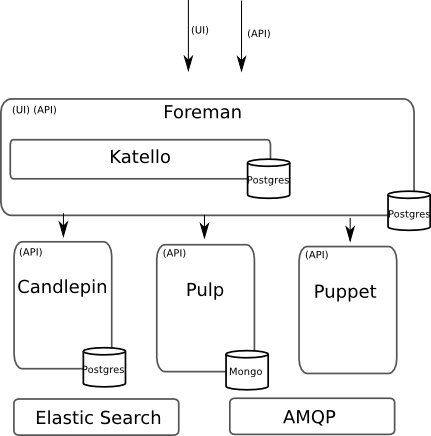Satellite 6 is Here… We Hope You Enjoy It
The Satellite Team is proud to announce the release of Satellite 6.0. This release is the culmination of several years of collaboration between some incredibly active open source communities, many savvy and technically strong customers, and a very passionate Red Hat engineering team. We have worked together upstream, and downstream through two Managed Design Programs, and two beta cycles. First and foremost, thank you for your efforts and the feedback which have helped us to deliver this next generation Linux System Management tool. We are very excited, and we cannot wait to hear your feedback. This article will provide you a quick summary of the release and provide you some history of how the product evolved.
Satellite 6 Feature Overview
The term “Systems Management” can be very broad and means different things to everyone. For Satellite 6, we have focused on four main management areas:
- Content Management: Mirror your content and configuration and determine which machines in which locations should consume which content.
- Configuration Management: Define configuration policies for machines and ensure compliance to those policies
- Provisioning: Use system definitions to build machines on bare metal, virt fabrics, and in the cloud
- Subscription Management: Track your subscriptions from the order, to the machine which is consuming it
Before we give the you the details of what is really new in this release, we would like to explain how Satellite 6 evolved. Satellite 6 has two real back stories, one is around The Foreman (Provisioning and Configuration Management) and the other around Katello (Content and Subscription Management).
The Foreman
Foreman started 5 years (0.1 was release at September 10 2009) ago by Ohad Levy. Its primary aim was to simplify IT management for system administrations, building on top of his experience as a system administrator. Foreman filled in the gaps between provisioning, configuration management, and large scale deployments in the enterprise, cloud or in an combined environment. Over time, Foreman grew to support multiple use cases, ranging from virtualization and cloud deployments, to auditing, pluggable, high availability, and support really large scale deployments. Today Foreman is known as one of the top 10 open source management software for IT infrastructure.
Katello
If you have ever seen one of Thomas Cameron's talks on Satellite, you know there is lots of great institutional knowledge on using channels in Satellite 5. Members of the engineering team consulted with many different Satellite customers and had them walk through how they used Satellite in their day-to-day jobs. What came out was a very consistent set of stories around needing to sync content without using it, define static sets of content, and then promote that content through various environment in order to test and verify the work. These stories turned into the Katello project which is used for the content and subscription management pieces of Satellite
Bringing them Together
These two projects, along with their dependent projects Puppet, Pulp, and Candlepin form the basis of Satellite 6. Here is what the architecture looks like:

This is what was developed upstream and what hundreds of customers tested as part of the various Managed Design Programs and Satellite 6 Beta Programs.
Satellite 6 New Features
A community driven provisioning tool and a customer driven content tool were combined to give Satellite users lots of new and exciting features.
New Content Management Features
- Mirroring all software into a Definitive Software LIbrary before being used.
- Defining Content Views to ensure that machines of a given type always get the same version of the content
- Custom Environment lifecycles to support Development to Production application lifecycles
- Support for RPM and non RPM content, starting with Puppet Modules
- Combined views of Red Hat and Custom Products
New Configuration Management Features
- Policy based Configuration Management using Puppet
- Drift Detection against puppet policies
- Integration of Configuration and Content into single views
New Provisioning Features
- Provisioning Templates combining managed content and configuration policy
- Provisioning support of Bare Metal plus RHEV, OpenStack, EC2, and other platforms
- Discovery ISO images to bring machines into inventory, and provision later
- Tools to generate bootdisks which allow for PXE and PXEless provisioning
New Subscription Management Features
- Tracking of contracts and service levels at an individual machine level
- Visibility into the usage of subscriptions, and subscription end dates
- Direct Access to Red Hat Customer Portal knowledge base
New Infrastructure Features
- Robust Role Based Access Controls
- Kerberos SSO integration
- REST API
- Command Line tool with UI parity
- Scale and Federation using Capsules
- Multi-tenancy with support for many customer accounts in one Satellite


Comments